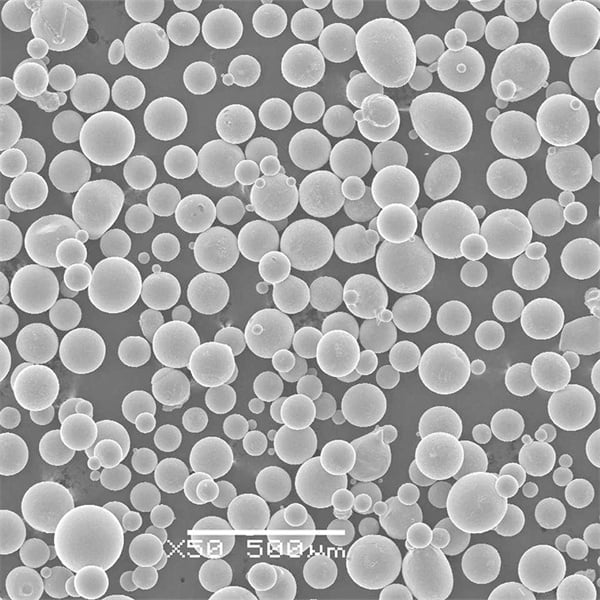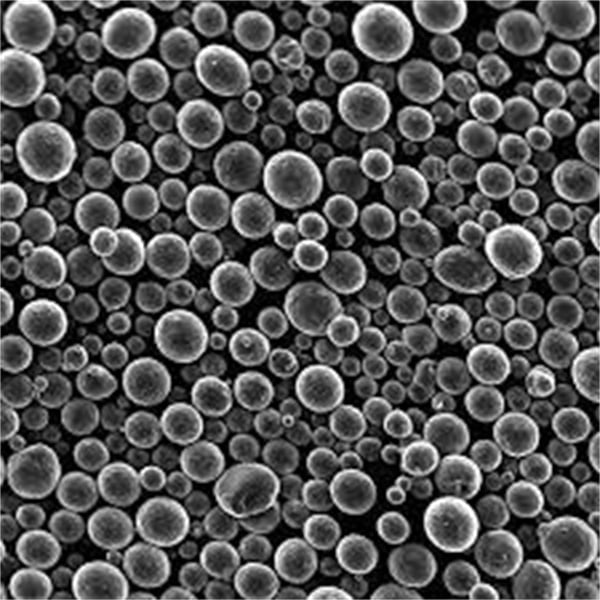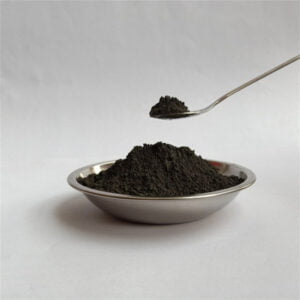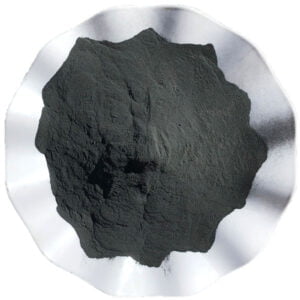Titanium Diboride Powder
Table of Contents
Titanium diboride (TiB2) is an advanced ceramic material with a unique combination of properties that make it suitable for demanding applications in industries such as aerospace, defense, automotive, and manufacturing. This article provides an overview of titanium diboride powder, including its key characteristics, production methods, and current and emerging uses across various sectors.
Overview of Titanium Diboride Powder
Titanium diboride is a refractory ceramic compound composed of titanium and boron. Its chemical formula is TiB2. Here is a quick look at some of the main features of this advanced material:
Key Properties:
- Extreme hardness – 9-9.5 on Mohs scale
- High strength at room and elevated temperatures
- Excellent thermal and electrical conductivity
- Low thermal expansion coefficient
- Good corrosion and oxidation resistance
- High resistance to chemical attack
- Low density – 4.5 g/cm3
Production Methods:
- Self-propagating high-temperature synthesis (SHS)
- Reaction of titanium dioxide and boron carbide
- Reduction of titanium dioxide and boron oxide
- Other methods like CVD, sol-gel, etc.
Common Forms:
- Powder
- Hot pressed components
- Thermal spray coatings
- Composite formulations
Industry Applications:
- Cutting tools and wear parts
- Engine components
- Thermal management systems
- Ballistic armor systems
- Nuclear applications -Electronics and sensors
- Emerging uses in 3D printing
These exceptional properties stem from the crystal structure, stoichiometry, and processing conditions used to synthesize titanium diboride. Let’s look at these aspects in more detail:

Composition and Crystal Structure
Titanium diboride has a simple hexagonal crystal lattice in which planes of titanium atoms alternate with graphite-like nets of boron. This arrangement gives rise to unique electrical, thermal, and mechanical characteristics.
Elemental Composition
Titanium diboride powder has the following elemental composition by weight percentage:
- Titanium – 69.96%
- Boron – 30.04%
This precise 2:1 molar ratio of titanium to boron enables the formation of stoichiometric TiB2 compound needed for optimal properties.
Crystal Structure
The hexagonal unit cell dimensions of titanium diboride are:
- a = b = 3.028 Å
- c = 3.228 Å
The titanium and boron atoms have a strong covalent bonding between them. The layered sequencing gives titanium diboride excellent basal plane strength while also enabling metal-like electrical conductivity across layers.
Lattice Parameters
High purity titanium diboride powder should have the following lattice parameters:
- a = 3.029 Å
- c = 3.229 Å
- c/a ratio = 1.066
- Cell volume = 23.06 Å3
Careful monitoring of lattice dimensions serves as a quality check during titanium diboride powder synthesis to ensure phase purity and guard against formation of secondary phases.
Key Properties and Characteristics
The combination of crystal structure, stoichiometry, and processing conditions imparts titanium diboride powder with its unique multifunctional properties that make it well-suited for extreme environments.
Mechanical Properties
| Property | Value |
|---|---|
| Hardness | 28-35 GPa |
| Fracture Toughness | ~5 MPa√m |
| Flexural Strength | 500-650 MPa |
| Compressive Strength | >2000 MPa |
| Young’s Modulus | 515-560 GPa |
The extreme hardness, high strength, and moderate fracture toughness of titanium diboride enable it to withstand high wear, abrasion, erosion, and load conditions.
Physical Properties
| Property | Value |
|---|---|
| Density | 4.5 g/cm3 |
| Melting Point | 2980°C |
| Thermal Conductivity | 60-120 W/mK |
| Electrical Conductivity | 107 Ω-1cm-1 |
| Thermal Expansion Coefficient | 8.3 x 10-6 K-1 |
The refractory nature, high conductive and low expansivity properties allow titanium diboride to endure thermal extremes and thermal cycling.
Chemical Properties
| Parameter | Rating |
|---|---|
| Oxidation Resistance | Excellent up to ~1000°C |
| Corrosion Resistance | Highly inert, non-wetting |
| Acid/Alkali Resistance | Withstands most acids/bases |
These chemical attributes provide titanium diboride components protection in reactive environments and process conditions.
This rare blend of mechanical, physical and chemical characteristics is what makes titanium diboride valued for specialized usages.
Production Methods for Titanium Diboride Powder
Titanium diboride powder suitable for such advanced applications cannot be produced by conventional ceramic powder processing techniques. Specialized non-equilibrium processes are needed to synthesize this ultra-high temperature compound.
Self-propagating High Temperature Synthesis
The SHS method involves highly exothermic redox reactions between titanium and boron precursors to produce TiB2 above 2000°C. Titanium dioxide and boron powder mixes ignite on localized heating to sustain a combustion front that converts reactants to titanium diboride product. Advantages of SHS include short formation time, single step synthesis, and fine 20-50 nm crystallite sized powder.
Reduction Processes
TiB2 powder can be manufactured by reducing TiO2 feedstock with boron/carbon sources at 1800-2200°C by various methods:
- Metallothermic reduction using magnesium
- Silicothermic reduction with silicon oxide
- Aluminothermic reduction via aluminum
- Carbothermal and borothermal reduction in vacuum
Other Processes
Additional techniques like sol-gel, CVD, and plasma synthesis are also being explored for preparing nanoscale and ultrafine titanium diboride powder.
Proper post-processing via deagglomeration, milling, and classification ensures availability of application-specific particle sizes and size distributions.
Product Specifications
Titanium diboride powder for commercial and research usages is available in standardized as well as customized varieties to meet application needs:
Sizes
- Nanopowder: Particle size < 100 nm
- Ultrafine powder: Particle size 0.1 – 1 μm
- Fine powder: Particle size 1-10 μm
- Coarse powder: Particle size > 10 μm
Morphology
- Spherical, angular, flaky, dendritic particles
- Degree of agglomeration
Purity Grades
- Research grade – >= 92-98% TiB2
- Technical grade – >= 94% TiB2
- Industrial grade – >= 96-99% TiB2
Surface Area
- Low surface area ~1-5 m2/g
- High surface area 5-25 m2/g
Customization
- Dopant additions – Ta, Nb, TiC, etc.
- Composite formulations
- Desired particle size distribution
Understanding application goals guides proper powder grade selection – purity, density, particle properties directly impact finished product qualities.
Pricing
Titanium Diboride Powder Price
Prices vary based on:
- Purity grade
- Scale of production
- Particle characteristics
- Rarity of specifications
- Purchase volume
Price Influencing Factors:
- Raw material costs
- Energy intensive processing
- Specialized non-equilibrium techniques
- Multiple post-treatment steps
- Special handling and shipping protocol
Cost Reduction Approaches:
- Switching to lower purity grade powder
- Increasing buy quantity for discounted rates
- Buying Ti and B precursor mixes instead of TiB2 powder
Suppliers
As an advanced, engineered ceramic material, there are few large-scale producers of titanium diboride powder globally. Some leading suppliers are:
Major Manufacturers
- H.C. Starck – Germany
- Materion – US
- 3M – US
- Japan New Metals Co. – Japan
Other Suppliers
- Stanford Advanced Materials – US
- Edgetech Industries – UK
- Micron Metals – US
- Nanoshel – US
Applications of Titanium Diboride
The exceptional combination of properties of titanium diboride powder makes it suitable for specialized applications across multiple industrial sectors:
TiB2 Applications in Cutting Tools
Titanium diboride’s extreme hardness, high strength, good thermal conductivity, and chemical resistance enable it to be an excellent candidate for making cutting tool inserts and other wear components.
TiB2 Cutting Tool Specifications
| Parameter | Value |
|---|---|
| Hardness | 32-35 GPa |
| Transverse Rupture Strength | 600 MPa |
| Fracture Toughness | 4-6 MPa√m |
| Maximum Service Temperature | 800-1000°C |
TiB2 Tool Operating Conditions
- High speed machining > 100 m/min
- Interrupted cutting with mechanical shocks and vibrations
- Low coolant or dry machining environments
Suitable for Machining
- Highly abrasive materials – CFRP, MMCs, nickel alloys
- Aerospace grade aluminum, titanium & superalloys
- Hardened steels – tool, stainless and super steel
Advantages Over Other Tool Materials
- 4X higher hardness than tungsten carbide
- Better wear resistance than alumina tools
- Higher strength than cBN tools at > 700°C
- Better chemical inertness versus SiC, Si3N4 ceramic
TiB2 Cutting Tool Products
- Indexible inserts with complex geometries
- Solid end mills and drill bits
- Custom tool shapes
Thus titanium diboride demonstrates tooling cost benefits via longer life, higher productivity, and expanded suitable work materials.
Armor Applications
Owing to its low density coupled with high strength and hardness, TiB2 serves as an efficient ballistic armor material for personnel as well as vehicle protection against threats.
TiB2 Armor Tile Specs
| Parameter | Value |
|---|---|
| Areal Density | 25-40 kg/m2 |
| Hardness | 28-32 GPa |
| Flexural Strength | > 450 MPa |
| Ballistic Limit > 1000 m/s for FSPs |
Vehicle Hull Designs with TiB2
- ERA tiles for armored vehicles
- RHA steel and fiber metal laminate backing
- Composite sandwich structures with CFRP face sheets
Personnel Body Armor Inserts
- Rigid faced ceramic plates
- Soft armor vests with fabric layers
- Multi-hit capable thanks to damage tolerance
Advantages
- 2X lower density versus alumina armor
- Lower cost and weight than SiC products
- Multi-hit protection unlike monolithic ceramics
Thus TiB2 enables lighter yet stronger armor solutions for either man-portable gear or fighting vehicles.
Thermal Management Applications
The combination of excellent thermal conductivity along with high temperature stability and resistance makes titanium diboride useful for thermal management parts in extreme temperature and corrosive environments.
TiB2 Heat Spreaders
| Specs | Values |
|---|---|
| Thermal Conductivity | 60-100 W/mK |
| Max Use Temperature | 1000°C |
| CTE | 7.6 x 10-6 K-1 |
Industries and Uses
- Microelectronics – IC heat sinks with Cu/Al interfaces
- Concentrated solar plants – Central receivers
- Spacecraft – Combustion chambers, rocket nozzles
- Nuclear – Plasma facing components in tokamak reactors
Benefits Over Other Materials
- Lighter than Cu/Mo based heat sinks
- Withstand higher temps than Al or SS alloys
- Better conductivity and inertness over carbides
- Lower cost than diamond or pyrolytic graphite
Thus titanium diboride delivers composite like thermal characteristics for managing heat fluxes in high power systems.
Metal-Matrix and Ceramic Composites
Due to its high strength-to-density ratio coupled with chemical compatibility, titanium diboride is an attractive addition for making metal, intermetallic, and ceramic composite materials.
TiB2 Reinforced Metal Matrix Composites
| Matrix | Properties Boosted |
|---|---|
| Magnesium | Hardness, stiffness, creep resistance |
| Aluminum | Strength, hardness, wear resistance |
| Titanium alloys | High temperature strength |
20-40% volume fractions of TiB2 are typically added to achieve significant enhancements.
TiB2 Ceramic Composites
| Components | Purpose |
|---|---|
| SiC, TiB2 | Thermal protection systems |
| Al2O3, TiB2 | Cutting tools |
| ZrB2, TiB2 | Furnace elements |
TiB2 has excellent compatibility with other hard ceramics enabling manufacture of composites with tailored properties.
Benefits
- Increased high temperature strength
- Reduced density while boosting stiffness
- Improved hardness for wear applications
- Better thermal conductivity for hot section parts
Comparative Evaluation of Titanium Diboride Powder
Titanium diboride has attractive characteristics but must be selected based on application requirements and cost constraints. Here is a weighting of TiB2 against alternatives:
Comparison with Tool Materials
| Parameter | TiB2 | WC | cBN | PCD |
|---|---|---|---|---|
| Hardness | 1st | 2nd | 3rd | 4th |
| Fracture Toughness | 3rd | 1st | 4th | 2nd |
| Thermal Conductivity | 2nd | 4th | 3rd | 1st |
| Oxidation Resistance | 2nd | 3rd | 4th | 1st |
| Cost | 2nd | 1st | 4th | 3rd |
Titanium diboride strikes an optimal balance of hardness and temperature properties at lower price points.
Comparison with Armor Ceramics
| Parameter | TiB2 | Al2O3 | SiC | B4C |
|---|---|---|---|---|
| Density | 2nd | 4th | 3rd | 1st |
| Hardness | 2nd | 3rd | 1st | 4th |
| Strength | 2nd | 3rd | 1st | 4th |
| Cost | 3rd | 1st | 4th | 2nd |
For budget sensitive yet performance-driven armor projects, TiB2 provides economical protection.
Comparison with Refractory Metals
| Parameter | TiB2 | Mo | Ta | Nb | |
|---|---|---|---|---|---|
| Density | 1st | 3rd | 2nd | 4th | |
| Strength | 2nd | 4th | 3rd | 1st | |
| Melting Point | 3rd | 2nd | 1st | 4th | |
| Thermal Expansion | 1st | 3rd | 4th | 2nd | |
| Cost | 4th | 2nd | 3rd | 1st |
Titanium diboride competes favorably with ultra high temperature metals on some thermal and physical properties.
Careful analysis of operating conditions helps identify whether TiB2 confers sufficient advantage over other material choices considering cost differentials.
Advantages and Limitations of TiB2 Powder
Like other advanced materials, titanium diboride offers significant benefits but also poses certain challenges regarding usage and handling:
Titanium Diboride – Advantages
- Extreme hardness for wear resistance
- High strength across range of temperatures
- Withstands thermal shocks and cycling
- Chemically inert in acidic/alkali environments
- Enables lighter armor and engines
- Economical compared to diamond, cBN, etc.
Titanium Diboride – Disadvantages
- Brittle material with poor damage tolerance
- Prone to chipping during machining or impacts
- Requires high temperature processing
- Difficult to join with metals or ceramics
- Oxidizes rapidly above 1000°C
- Restricted suppliers and high costs
Mitigation Strategies
- Apply suitable coatings for oxidation protection and lubricity
- Opt for pressureless vs fusion sintering to retain nanostructure
- Use ductile phase reinforcements like Ni, Cu to improve toughness
- Employ suitable bonding layers or gradients for joining
- Leverage composites to offset intrinsic brittleness
Selective utilization of titanium diboride where its capabilities outweigh limitations yields optimal performance.

FAQ
Here are answers to some common queries regarding titanium diboride powder:
What is titanium diboride powder?
Titanium diboride (TiB2) powder is a ceramic material composed of titanium and boron. It is known for its exceptional hardness and high melting point.
What are the main properties of titanium diboride powder?
Titanium diboride powder is characterized by its high hardness, excellent wear resistance, high melting point (approximately 2980°C or 5396°F), and good electrical conductivity.
What are the common applications of titanium diboride powder?
Titanium diboride powder is used in various applications, including cutting tools, armor materials, wear-resistant coatings, and as a reinforcement material in composites.
Is titanium diboride powder toxic or hazardous?
Titanium diboride powder is generally considered safe when handled properly. However, like many fine powders, it should be handled with care to avoid inhalation or skin contact. Proper safety precautions should be followed in industrial settings.
Can titanium diboride powder be used in 3D printing?
Yes, titanium diboride powder is used in the field of additive manufacturing, including 3D printing. It can be used to create strong and wear-resistant parts and components.
How is titanium diboride powder produced?
Titanium diboride powder is typically produced through a process called carbothermal reduction, where titanium dioxide and boron oxide are reacted at high temperatures in the presence of carbon.
What are the advantages of using titanium diboride powder in cutting tools?
Titanium diboride is known for its hardness and wear resistance, making it an excellent material for cutting tools. It can maintain sharp edges for longer periods, reducing the need for frequent tool replacements.
Is titanium diboride powder expensive?
Titanium diboride powder can be relatively expensive compared to other materials due to its unique properties and production process. The cost can vary depending on purity and particle size.
Can titanium diboride powder be used in aerospace applications?
Yes, titanium diboride powder is used in aerospace applications, especially for components that require high temperature and wear resistance, such as turbine blades and nozzles.
Is titanium diboride powder electrically conductive?
Yes, titanium diboride is electrically conductive, which makes it suitable for applications where both hardness and electrical conductivity are required.
Share On
MET3DP Technology Co., LTD is a leading provider of additive manufacturing solutions headquartered in Qingdao, China. Our company specializes in 3D printing equipment and high-performance metal powders for industrial applications.
Inquiry to get best price and customized Solution for your business!
Related Articles
About Met3DP
Recent Update
Our Product
CONTACT US
Any questions? Send us message now! We’ll serve your request with a whole team after receiving your message.

Metal Powders for 3D Printing and Additive Manufacturing
COMPANY
PRODUCT
cONTACT INFO
- Qingdao City, Shandong, China
- [email protected]
- [email protected]
- +86 19116340731

















